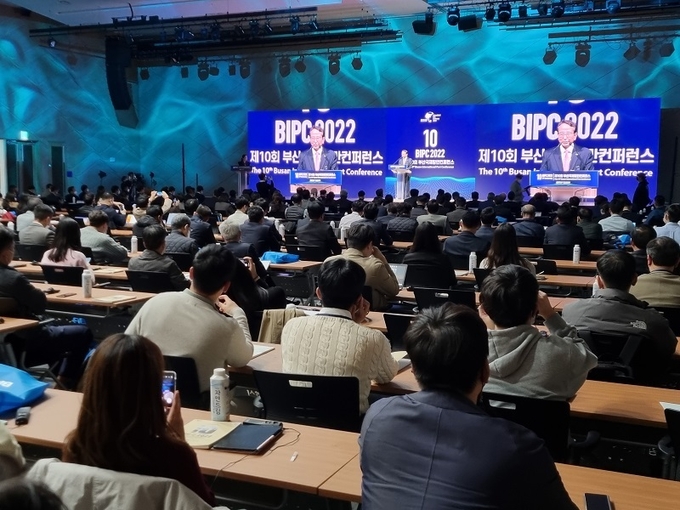The Busan International Port Conference (BIPC, Busan International Port Conference) hosted by the Busan Port Authority (BPA) celebrates its 10th anniversary this year. The conference on November 4th was held online and offline at the same time as it has been since the pandemic, but thanks to the lifting of indoor gathering restrictions, many people attended the Busan Port International Exhibition and Convention Center (BPEX)
Under the theme of "Adapts and Advances," three sessions were held. Top experts in the shipping and port sectors - including Tim Power, managing director of Drewry, Frank Magarian, senior vice president of CMA CGM, and Mario Codero Executive Director of Port of Long Beach - looked at the bright and dark sides of the pandemic over the past two years and shared innovative examples and insights across shipping, ports, and logistics regarding the outlook for the opaque shipping market.
The outlook for the future shipping market is not optimistic at this time as there are visible signs with vessel prices falling by more than a third in just a few months following a slowdown in demand, and a drop in freight rates and charter rates.
With 28% of the global shipping capacity newly coming into the market one by one from next year, the liner sector faces various uncertainties and challenges as the players accelerate ESG management and pressure to decarbonize, along with the unexpected or too much early slump in the market that they are going through.
The conference provided an opportunity to listen to industry opinions from various perspectives of Drewry and LinerLytica as shipping analysis agencies, top managers from the port authorities of Long Beach and Seattle, Singapore and Dubai, and Barcelona and Hamburg. CMA CGM and Kuehne & Nagel also participated.
In particular, Tim Power from Drewry gave a negative opinion when asked whether super-large scale ships of more than 24,000 TEU will continue to appear in the future. The vessels can be efficient in the maritime section by lowering the logistics cost per unit, that is, the transportation unit price by more than 25%, but it is not in terms of the actual overall supply chain.
He explained that a large amount of quantitative cargo on super-large ships is concentrated at once, causing serious congestion or temporary paralysis in ports(terminals), which results in about 20% inefficiency. He also said that large ships over 20,000 TEU can only be deployed on some long-distance routes, so the advantages of the ships will inevitably be tarnished from the perspective of ship use.
Hua Joo Tan, the founder of Linerlytica, pointed that the two key drivers for the 2021 container boom were elevated consumer demand and port congestion especially in the US. He saidthe unwinding of these key drivers will unleash a significant supply overhang that will be exacerbated by new ship deliveries in 2023 and 2024. Vessel scrapping, slow steaming and capacity management will not be able to prevent a hard landing, he carefully presumed.
Various opinions were presented on "vertical integration" in which shipping companies acquire logistics companies and entered areas beyond Port-to-Port. Drewry said that entering the comprehensive logistics area is not a new phenomenon and has been attempted in the past, and predicted that it would be difficult for shipping companies and logistics service providers to be compatible with the problem of forming competition with customers.
In relation to this, CMA CGM said, "Unlike in the past, it is difficult to meet customers' demands without having physical logistics assets due to global supply chain turmoil. Although vertical integration attempts by shipping companies may have failed in the past, the situation has changed a lot."
Further, in-depth discussions were held at this conference on digital innovation and future development strategies in the logistics and shipping industries.
BPA President Kang Joon-seok said, "BIPC, which marks its 10th anniversary this year, has made a turning point for Busan Port to take the lead in responding to global environmental changes and take a leap forward."
About 300 people applied for the 10th BIPC during the two-week online pre-registration period, and about 100 additional on-site registrants attended the 10th BIPC.


















